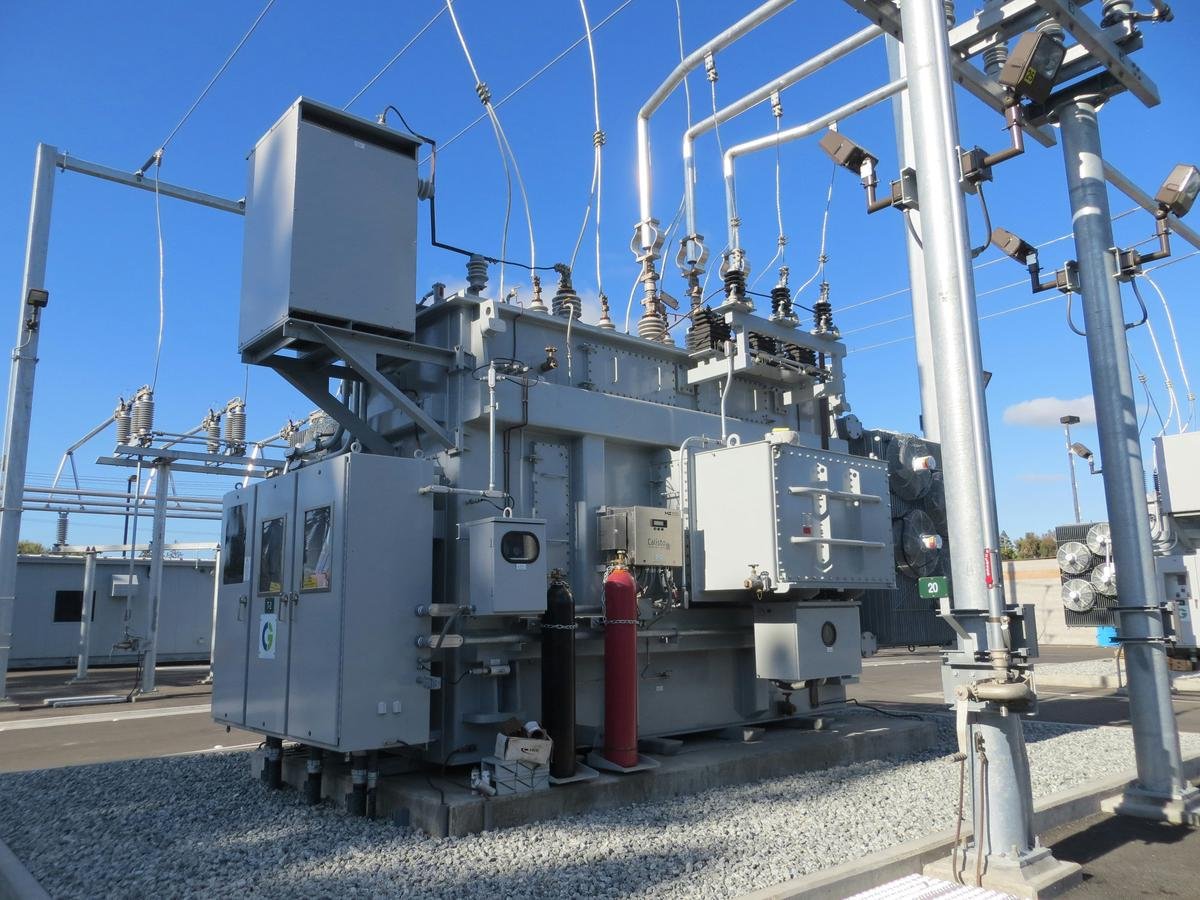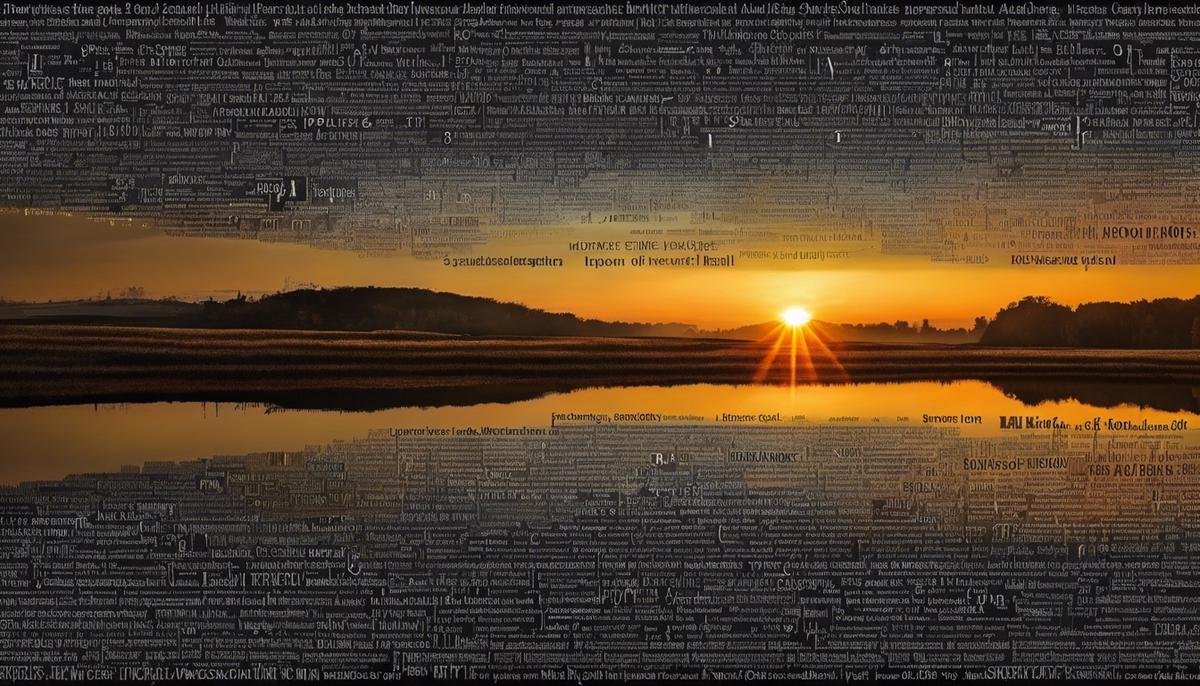At the intersection of creativity and computation lies the revolutionary technology known as Generative Adversarial Networks or GANs—a dual neural network architecture that is redefining the boundaries of content creation. On one hand, the generator network wields the power to conjure up synthetic data with astonishing detail, and on the other, the discriminator network acts as the arbiter of authenticity, pushing its counterpart towards ever-greater heights of realism. This dance of digital innovation, rooted in sophisticated algorithms and neural backpropagation, is not just an academic curiosity; it stands at the forefront of a paradigm shift in art, music, and media. By exploring the foundational mechanics of GANs, we embark on a journey to unravel how these enigmatic algorithms are setting the stage for a new era where content is crafted not just by human hands, but also by the intricate patterns of artificial intelligence.
Underpinnings of Generative Adversarial Networks
Generative Adversarial Networks (GANs) represent one of the most enthralling developments in the field of artificial intelligence and machine learning. At their core, GANs are algorithmic architectures that pit two neural networks against each other in a confrontational setting, hence the term ‘adversarial’. This setting fosters a unique form of unsupervised machine learning, leading to the creation of highly persuasive synthetic data.
To comprehend the foundational concepts behind GANs, we must first acquaint ourselves with the two central players in this adversarial process: the generator and the discriminator. The generator network operates as a data forger, tasked with creating counterfeit instances that mirror the characteristics of genuine data. Its adversary, the discriminator, functions as a skeptic, critically evaluating whether the input it receives is authentic or fabricated by the generator.
The confrontation begins with the generator producing a piece of data, which is then passed to the discriminator. The discriminator assesses this data against known authentic data and renders a verdict. If the discriminator deems the generated data to be fake, it informs the generator of its inadequacies, and the generator adjusts its parameters to improve its craft. Conversely, if the discriminator incorrectly identifies the synthetic data as real, it too must adjust its parameters to enhance its discernment.
This dynamic process is underpinned by the concept of a zero-sum game, a foundational principle rooted in game theory. In this context, the gain of one network directly corresponds to the loss of the other. The ultimate goal of the process is to reach a Nash equilibrium where neither the generator nor the discriminator can improve their performance without the other becoming less competent.
Through iterative cycles of this adversarial training, the generator strives to produce data so convincing that the discriminator can no longer reliably distinguish fake from real. Meanwhile, the discriminator simultaneously sharpens its ability to detect discrepancies, albeit in an environment of ever-increasing forgeries’ sophistication.
The beauty of GANs lies in their versatility and generality; they hold potential across myriad domains, from image and audio synthesis to drug discovery and beyond, facilitating exploration in areas where conventional methods falter. This innovation stimulates both theoretical and practical advances in machine learning, expanding the frontier of what computers can generate and how we might distinguish between the born and the made.
In the pursuit of advancing knowledge within the field of artificial intelligence, GANs embody a significant step forward — a testament to the extraordinary capabilities that emerge from the intersection of creativity, competition, and computation.

Photo by publicpowerorg on Unsplash
Applications of GANs in Content Creation
Generative Adversarial Networks (GANs) have been heralded as a cornerstone of technological innovation in content creation, stretching across multiple domains with their transformative capabilities. The capacity of these networks to generate new, synthetic instances of data that are remarkably indistinguishable from real-world data has profound implications for numerous fields.
In the realm of art and graphics, GANs are engendering a renaissance of sorts, enabling artists and designers to produce original images, textures, and patterns. Not only does this reduce the time involved in crafting intricate designs from scratch, but it also offers unprecedented freedom to explore untapped areas of creativity. The production of visual content, once a time-consuming venture, is becoming more efficient and experimental with the aid of GANs.
Photorealistic image synthesis is among the most astounding applications. Here, GANs create high-resolution, realistic images that can be used in virtual reality environments, games, and simulations. This advancement is not merely enhancing the visual experience but is also central to developing more immersive and interactive technologies.
In the film industry, GANs are revolutionizing special effects and animation. The technology is facilitating the creation of more lifelike and expressive characters without the intensive labor traditionally associated with these tasks. The implication of such capabilities reaches the broader sphere of visual communication, from advertising to education, where high-quality, realistic imagery plays a crucial role.
Moving beyond the visual, GANs are also reinventing audio content creation. From generating music to simulating lifelike speech, these networks are pushing the boundaries of what is possible in sound design and auditory experiences. The integration of GANs into the creation of soundtracks, for instance, has potential to diversify the musical landscape, making it richer and more accessible to those who are not conventional musicians.
In the domain of text, GANs are aiding in the generation of coherent and contextually relevant narratives. Whether it’s penning fictional stories or fabricating news articles that mimic genuine journalism, the potential of GANs in automating and augmenting the writing process is vast. This does not spell the obsolescence of human writers but suggests a future where human creativity is augmented by artificial insights.
Lastly, GANs are playing a pivotal role in the advancement of scientific research and data augmentation. Researchers are utilizing GANs to synthesize data where sample sizes are limited, effectively overcoming a major obstacle in many scientific inquiries. This has especially profound consequences for fields such as medicine, where synthetic generation of medical images can aid in the development and testing of diagnostic tools without compromising patient privacy.
Generative Adversarial Networks are not merely automating existing processes; they are expanding the creative capabilities and potential outputs of multiple industries. In doing so, GANs have become the fulcrum upon which a new era of content creation is balanced, promising a future where the convergence of human ingenuity and machine intelligence unleashes a cascade of novel possibilities.

Advancements in GAN Technology
Recent advancements in Generative Adversarial Network (GAN) technology have stirred a transformative wave in content creation, with implications that stretch the imagination. GANs, at their core, are complex algorithms capable of generating content that is increasingly indistinguishable from that produced by humans.
One of the most groundbreaking advancements is the improvement in the quality and resolution of images generated by GANs. This leap forward means that visuals of almost ‘camera-captured’ quality can be synthesized from scratch. This advance not only enriches the quality but also expands the quantity of content that can be created without the need for traditional photography, which may revolutionize stock imagery and digital advertising sectors.
In the realm of video content, GANs now facilitate the generation of high-fidelity motion sequences. By understanding and mimicking the subtleties of movement, GANs empower creators with new tools for animation, reducing the time and effort required. Coupled with the rise of virtual reality (VR) content, this could greatly enhance immersive experiences, providing depth and realism previously unattainable.
Another significant stride is in the automation of editing tasks. Through learning and adaptation, GANs assist in tasks such as image retouching or video enhancement, processes that traditionally require expert human intervention. This can democratize high-quality content creation, making it accessible to a wider audience regardless of technical skill.
In terms of personalized content, GANs now offer unprecedented customization. As these networks learn from vast datasets, they can tailor content based on individual preferences or demographics, thus enabling hyper-personalized experiences. This is notably impactful in marketing and entertainment, where content can be optimized for engagement on a person-to-person basis.
Furthermore, the deep learning models powering GANs have been fine-tuning the art of conversation. Advanced chatbots and virtual assistants are becoming more sophisticated and nuanced in their interactions. GANs contribute to these developments by improving natural language understanding and generation, thus making machine interactions seem more human-like.
Importantly, GANs are catalyzing change in educational content. By automating the creation of textbooks with customized difficulty levels or tutorials that adapt to a student’s learning pace, educational technology can truly become personalized. Such tools can disrupt traditional learning paradigms and foster individualized, student-centered learning environments.
In the vanguard of combating fraudulent misuse of GAN technology, such as in the creation of deepfakes, significant resources are being deployed. State-of-the-art detection systems are evolving in parallel with content creation technology, aiming to preserve authenticity and protect against deception.
The implications of these advancements cannot be overstated. They are reshaping the landscape of content creation, enhancing how media is produced and consumed. As GANs continue to evolve, they offer a kaleidoscope of possibilities—each more enticing than the last—poised to redefine creativity, connectivity, and personalization in the ever-expanding digital universe.

Ethical Considerations and Mitigation Strategies
One must delve into the ethical quandaries introduced by GANs when these networks are applied to the field of content creation.
Evolving technologies often outpace the development of regulatory frameworks, necessitating a vigilant approach to the repercussions of their applications.
Critical ethical considerations arise from the ability of GANs to generate deceptive content, potentially blurring the lines between authenticity and fabrication.
The proliferation of ‘deepfakes’ is a prime example where GANs can underpin the creation of misleading images and videos, contributing to misinformation and impacting public trust.
This exploitation of technology can have wide-ranging implications, from personal reputation damage to the distortion of democratic processes.
Intellectual property rights present another ethical concern.
GANs that generate art or music could infringe on the original creators’ rights, undermining the system that incentivizes and protects creative endeavors.
Clear demarcation of ownership and fair compensation for generated work derived from the contributions of human artists becomes increasingly complex.
Further, GAN-produced content raises the specter of cultural insensitivity and bias.
The data used to train these networks may contain inherent prejudices which, if unchecked, perpetuate and even exacerbate systemic inequalities through the content creation.
To mitigate these ethical concerns, a multi-faceted approach is required.
First, it is imperative to establish comprehensive legal standards and guidelines that address the unique challenges posed by GAN technologies.
This would involve delineating the boundaries of acceptable use, providing clarity on intellectual property issues, and defining accountability for misuse.
Transparent labeling of GAN-generated content ensures that consumers are not misled and can discern between human and AI-created works.
Such transparency is crucial for maintaining integrity in media and art, thereby protecting public trust.
Furthermore, incorporating diverse datasets and actively removing biases during the training of GANs contribute to the generation of content that is more culturally sensitive and inclusive.
Researchers and developers must be vigilant about the sources and the quality of data employed to safeguard against the perpetuation of biases.
The implementation of ethical GAN usage also demands a collaboration between technologists, ethicists, and policymakers.
Through interdisciplinary efforts and tailored education, there is the potential to increase awareness of the ethical implications tied to GAN-related content creation and to cultivate digitally literate societies that can adeptly navigate the challenges presented by advanced AI technologies.
Prioritizing the development of detection tools for fabricated content generated by GANs is another imperative strategy.
The research community must stay ahead of the curve, creating robust algorithms capable of identifying AI-generated content, thus empowering individuals and organizations to combat misinformation effectively.
In conclusion, while GANs hold transformative potential in the realm of content creation, they bring to the fore a host of ethical concerns that require immediate and thoughtful attention.
Through concerted efforts in regulation, education, transparency, and technical advancement, the responsible stewardship of these potent technologies can be ensured, safeguarding societal values and the integrity of content in the digital age.

The Future Landscape of GAN-Enabled Content
Exploring the Horizon: The Evolution of Generative Adversarial Networks in Content Creation
As the proficiency of Generative Adversarial Networks (GANs) strides ahead, the horizon of content creation diversifies, offering both wondrous benefits and presenting formidable ethical challenges. The potential scenarios unfolding with the ongoing advancement of GANs may be transformative for numerous industries and societal facets.
In the realm of personalization, GANs are poised to advance beyond the static feed of today’s social media platforms. With the ability to analyze and learn individual tastes, future GAN systems may offer tailor-made content ranging from personalized news stories to entertainment that aligns perfectly with user preferences. This capability may extend to e-commerce where GANs could design virtual showrooms and products adjusted to reflect the desires of each consumer.
The education sector stands on the cusp of a revolution, with GANs having the ability to craft educational materials that adapt to the learning style and pace of each student. This fosters a dynamic and highly individualized learning environment, potentially bridging the gap between different educational backgrounds and learning abilities. As a corollary, the role of educators could shift toward facilitators of a more interactive and adaptive learning process.
Scientific discovery itself could accelerate as GANs are integrated into research processes, pushing the envelope in fields such as drug discovery, climate modeling, and cosmology. By simulating a plethora of scenarios and outcomes, these networks could unearth patterns and connections that elude traditional computational models, hastening the path to novel breakthroughs.
In an era where the veracity of media is under scrutiny, GANs may also carry considerable weight in fact-checking and authenticating content. As paradoxical as it may seem, the same technology that generates compelling deepfakes could also empower algorithms to detect nuances and discrepancies indicative of manipulated media, providing a digital watermark of authenticity.
However, the potential for misuse cannot be underestimated. With GANs capable of producing realistic content, discerning real from synthetic may become increasingly challenging, necessitating a robust framework of digital literacy. Educational initiatives must, therefore, strive to equip individuals with the skill set to critically evaluate and question the provenance of digital content.
Moreover, the burgeoning domain of creative works generated by GANs is likely to stimulate a reexamination of copyright laws and definitions of authorship. As the output from these neural networks reaches artistic echelons, the challenge is to reconcile human creativity with machine-generated content in a way that respects and perhaps even incentivizes human artists.
Anticipating a future in which images, voices, and even personalities can be fabricated with ease, society must grapple with the implications of such virtual manifestations on identity, privacy, and authenticity. Balancing the marvels of GAN-generated content with the safeguarding of fundamental human values is a task that will call for collective effort and foresight.
In conclusion, while Generative Adversarial Networks signal a remarkable shift in the capacity of machines to create, the full impact of their advancement will ultimately be shaped by societal choices, policy interventions, and the adherence to a shared ethic that promotes the responsible use of technology. Only with conscientious stewardship can the true potential of GANs be harnessed, ensuring that these innovations serve as catalysts for growth and enrichment rather than conduits for deception and division.

The world is perched on the brink of a creative renaissance powered by GANs, where art forms are fluid, and the distinction between the creator and the created becomes ever more ethereal. Amidst advances that promise greater personalization and dynamic media experiences, there lie profound philosophical questions about the essence of creativity and the role of human intervention in the arts. As we tread this new digital frontier, it remains imperative for society to navigate the ethical quandaries and embrace the collaborative synergy between human ingenuity and artificial intelligence. GANs have not only unlocked a realm of unlimited potential in content creation but have also invited us to reimagine the future of creativity in an interconnected world where technology and humanism converge.




